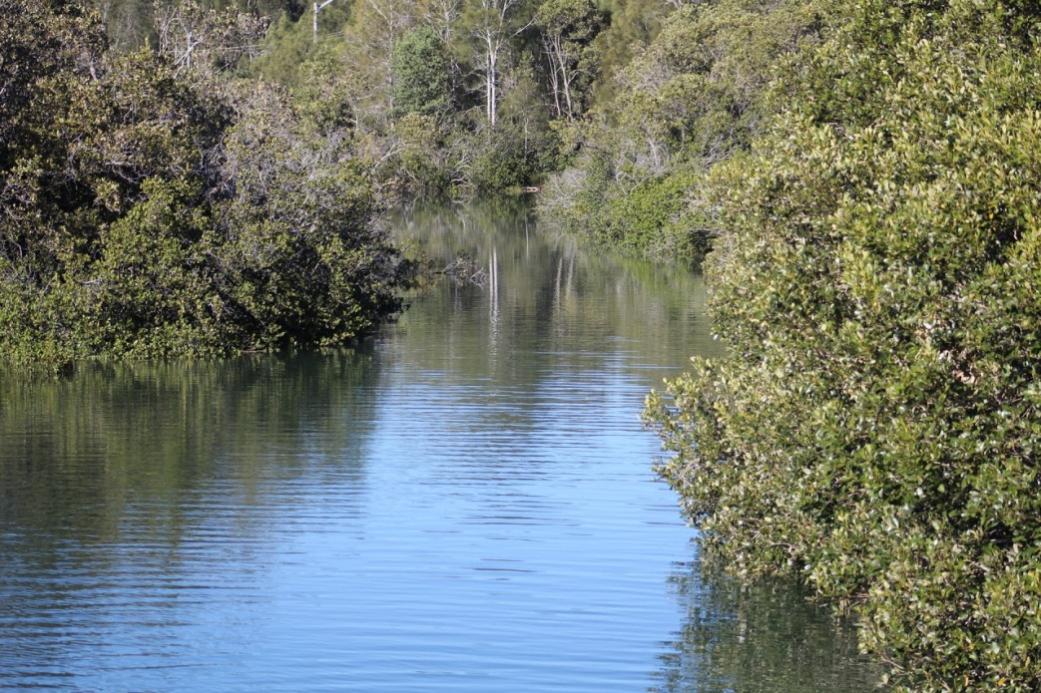January 29 - February 4, 2017: Issue 298
World Wetlands Day 2017: the 20th Year
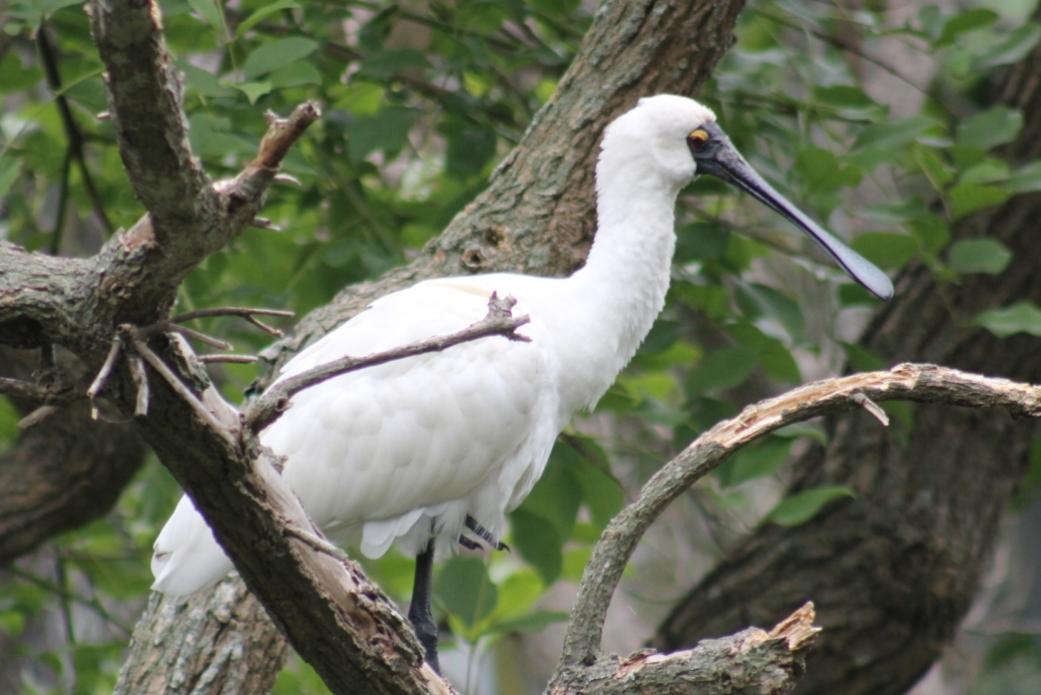
World Wetlands Day 2017
This coming Thursday is World Wetlands Day. The international theme for World Wetlands Day 2017 is Wetlands for disaster risk reduction. This theme will be reflected in the Australian Government's February 2017 edition of Wetlands Australia.
Wetlands play an important role in helping to provide communities with resilience to natural hazards such as flooding caused by storms, cyclones, storm surges and tsunamis. Under projected climate change scenarios, extreme climatic events, including floods, droughts and storms are expected to increase in frequency and intensity.
In many places wetlands have been thought of as wasteland, with more than 64% of the world’s wetlands disappearing since 1900. What we need to remember, year round, is that the mangroves and saltmarshes of Australia provide roosting and feeding sites for over 30 species of shorebirds, many of which fly annually over 10,000 km to Siberia and Alaska along the East Asian Australasian Flyway.
Our mangroves and coastal wetlands annually sequester carbon at a rate two to four times greater than mature tropical forests and store three to five times more carbon per equivalent area than tropical forests. Most coastal carbon is stored in the soil, not in above-ground plant material as is the case with tropical forests.
At least 2/3 of all the fish consumed worldwide are dependent on coastal wetlands. It has been estimated that the contribution of mangrove-related species in eastern Australia is around 67% of the entire commercial catch. World Wetlands Day is an annual opportunity to raise public awareness and promote the value of wetlands or get out there and be among them.
World Wetlands Day is celebrated internationally each year on 2 February. It marks the anniversary of the signing of the Convention on Wetlands of International Importance (Ramsar Convention) in Ramsar, Iran, on 2 February 1971.
Ramsar is the oldest of the modern global intergovernmental environmental agreements. The treaty was negotiated through the 1960s by countries and non - governmental organisations concerned about the increasing loss and degradation of wetland habitat for migratory waterbirds. It was adopted in the Iranian city of Ramsar in 1971 and came into force in 1975.
Australia was the first State to deposit an instrument of accession to the Convention on January 1st, 1974 and on May 8th of that year named the Cobourg Peninsula as the first Ramsar Site. The Cobourg Peninsula, 220 700 hectares, is a remote and unspoilt wilderness area on the far northern coast of Australia, and home to many threatened marine species as well as providing safe breeding areas to seabird colonies.
Most of the Cobourg Peninsula Ramsar site is managed as part of Garig Gunak Barlu National Park. Garig is a local language name, Gunak means land and Barlu means deep water. Land uses include conservation, regulated tourism, education, fi2shing and Indigenous use. Th5e Arrarrkbi are the Traditional Owners of the Cobourg Peninsula who uphold traditional land management practices, customary law and cultural practices. Cobourg Peninsula is managed jointly by the Traditional Owners and the Parks and Wildlife Commission NT. 5The health of Cobourg’s plants and animals is dependent on traditional Indigenous management practices, including burning, established over a long period of time.
The beaches provide regular nesting habitat for a number of species of threatened marine turtles including the green turtle (Chelonia mydas), flatback turtle (Natator depressus), leatherback turtle (Dermochelys coriacea) and olive ridley turtle (Lepidochelys olivacea) while the waters around Cobourg support the internationally vulnerable dugong (Dugong dugon). Signi2ficant seabird breeding colonies are found on the islands and some headlands
support large populations of crested terns (5alasseus bergii), bridled terns (Onychoprion anaethetus), black-naped terns (Sterna sumatrana) and roseate terns (Sterna dougallii).
Permanent wetlands at Coburg provide a dry season refuge for animals including waterbirds, reptiles such as saltwater crocodiles, and amphibians. Cobourg Peninsula provides important habitats, feeding areas, dispersal and migratory pathways, and spawning sites for numerous 2fish including barramundi (Lates calcarifer), giant trevally (Caranx ignobilis), mangrove jack (Lutjanus argentimaculatus), black bream (Acanthopagrus butcheri) and barracuda (Sphyraena barracuda).
Cobourg has Australia’s only population of banteng (Bos javanicus), wild cattle that came from Indonesia with Macassan traders in previous centuries.
Cobourg Peninsula has a fascinating history and includes a number of historical and cultural sites. Aboriginal people have lived there for over 40 thousand years and Macassans traded with Cobourg’s Indigenous people for centuries, seeking trepang (sea cucumbers). In 1838 Europeans established Victoria Settlement in Port Essington in response to British fears of Dutch and French expansion into northern Australia. The settlement was abandoned in 1849, due to disease and isolation, leaving ruins which are a popular destination for visitors. [1]
You can take a virtual tour of Cobourg Peninsula Ramsar Site at the following link: www.environment.gov.au/water/topics/wetlands/database/
World Wetlands Day first celebrated in 1997
World Wetlands Day was first celebrated in 1997. Since then government agencies, non-government organisations and community groups have celebrated World Wetlands Day by undertaking actions to raise public awareness of wetland values and benefits and promote the conservation and wise use of wetlands.
In the first ever World Wetlands Day of 1997 Australia was well and truly 'all aboard' in its approach, which should come as no surprise considering our history and still dynamic focus on being a maritime nation.
In 1997
- Wetlands Australia published a special edition for WWD with news of both regional and global events.
- NSW: The Wetlands Centre at Shortland, Newcastle, presented a special day for the public in collaboration with other local groups. Events on offer included guided walks, displays, schools' art competition, film festival and international food and wine tasting.
- South Australia: The Federal Environment Minister visited key wetlands, including two Ramsar sites, and launched the new federal wetlands policy. WWD was featured on local television by presenter Rob Morrison.
- Victoria: The Victorian Wetland Trust celebrated with a photographic competition and a field trip to Melbourne's Werribee Sewerage Farm, part of which is a Wetland of International Importance where some 250 bird species have been recorded.
The first World Wetlands Day, February 2nd, 1997, was also the day our Federal Government announced a new policy. The following is the text of the press release from Sen. Robert Hill, Australia's then Minister of the Environment, dated 2 February 1997.
LANDMARK POLICY LAUNCHED ON WORLD WETLANDS DAY
Senator the Hon Robert Hill
Leader of the Government in the Senate
Minister for the Environment
MEDIA RELEASE
The Howard Government has marked the start of World Wetlands Week by launching the Wetlands Policy of the Commonwealth Government of Australia.
Federal Environment Minister Robert Hill has unveiled the policy during a tour of the Coorong Wetlands in South Australia.
The policy contains strategies that address the management of Australia’s wetlands, implementing Commonwealth legislation and delivering Commonwealth programs.
Senator Hill says the policy is a landmark for the conservation and long-term sustainable use of Australia’s wetlands.
"Wetlands are among the most important life support systems on earth, yet over half of Australia’s wetlands have been destroyed since European settlement.
"By developing this policy, the Howard Government is formally acknowledging the many values of Australia’s wetlands and recognising the need to build issues relating to management of these natural assets into the daily business of governing.
"All Commonwealth Departments are now committed to a set of key objectives designed to achieve the goal of the policy which is ‘to conserve, repair and manage wetlands wisely’.
"The policy also represents an important step in the development of a national policy framework for wetlands.
"The Commonwealth’s Wetlands Policy is designed to complement those already in place in New South Wales and Western Australia, and those being developed by Queensland and the Northern Territory."
Australia has 49 wetlands considered to be of international significance under the Ramsar Convention. These include the Coorong Wetlands, Lakes Alexandrina and Albert in South Australia and wetlands in Kakadu National Park.
Senator Hill says the policy will support Australia’s efforts under the Ramsar Convention.
"Australia can be proud that it was the first nation to join the Ramsar Convention when the Gorton Government signed the Convention in 1971.
"Ramsar was a pioneer of the concept of ecologically sustainable development, or ‘wise use’, and this policy will ensure Australia continues to be a world leader in this field."
Senator Hill also used World Wetlands Day to jointly release with the South Australian Minister for the Environment, the Hon. David Wotton, the first stage of the Register of Wetland Restoration Projects in Australia, marking the beginning of a process of assessment of wetlands in line with international obligations.
In Pittwater
In Pittwater we have access to mangroves along the estuary rims of Pittwater itself as well as the largest remaining sand plain wetland in the northern Sydney area in Warriewood Wetlands, 26 hectares of creeks meeting sea and trees filled with birds.
In 2014 David James OAM, who was one of several community members who worked tirelessly to ensure we have a reserve at Warriewood, shared an insight into that process as part of a history focus on Pittwater's Watery Environs in Eeling In Warriewood's Creeks. This had been preceded by a guided walk through that Living Wetland to showcase what was worth saving.
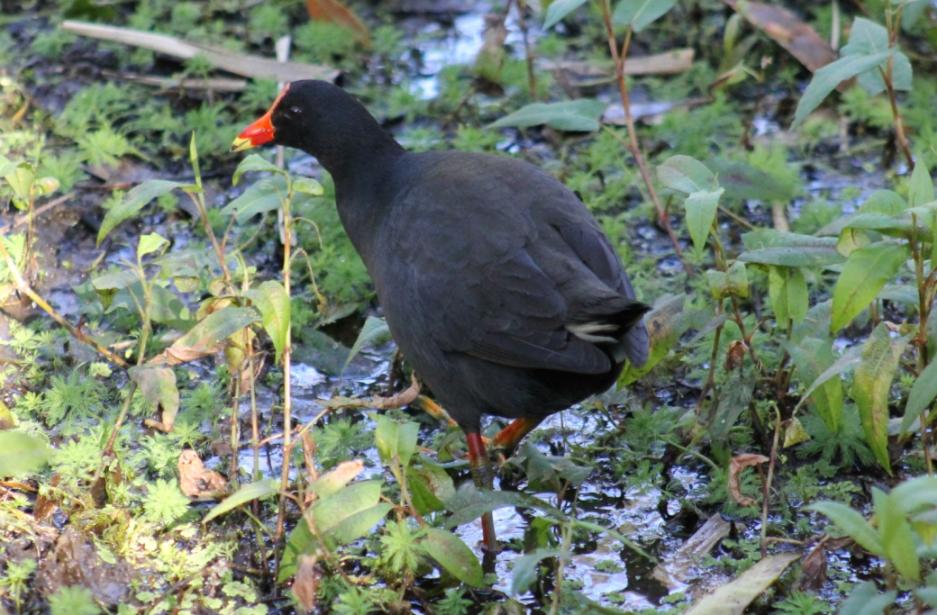
One of the best contributions any of us can make to our own wetlands is to look after them - pick up rubbish when you find it, join one of the many local bush care groups which work along the creeks or in offshore areas restoring and rehabiltating these areas, such as Floating Landcare, and keep an eye out for people letting their dogs off the leash in these protected for the birds areas.
Wetlands Youth Photo Contest 2017
The Ramsar Convention Secretariat is again running a photographic competition for 18-25 year olds. The photograph must be taken of any type of wetland that helps us cope with extreme weather events. The winner will receive a free flight to visit a wetland of international importance (Ramsar wetland), courtesy of Star Alliance Biosphere Connections. To enter upload your photo to www.worldwetlandsday.org. The competition is open between 2 February and 2 March 2017.
Reference
1. Celebrating the 40th anniversary of the Ramsar Convention in Australia – a showcase of Australian Ramsar sites. Wetlands Australia February 2014. Australian Government Dept. of Environment. Retrieved from: https://www.environment.gov.au/system/files/resources/45e00b9f-8249-4455-96d1-85df9816c6d9/files/wa24-ramsar-convention.pdf .
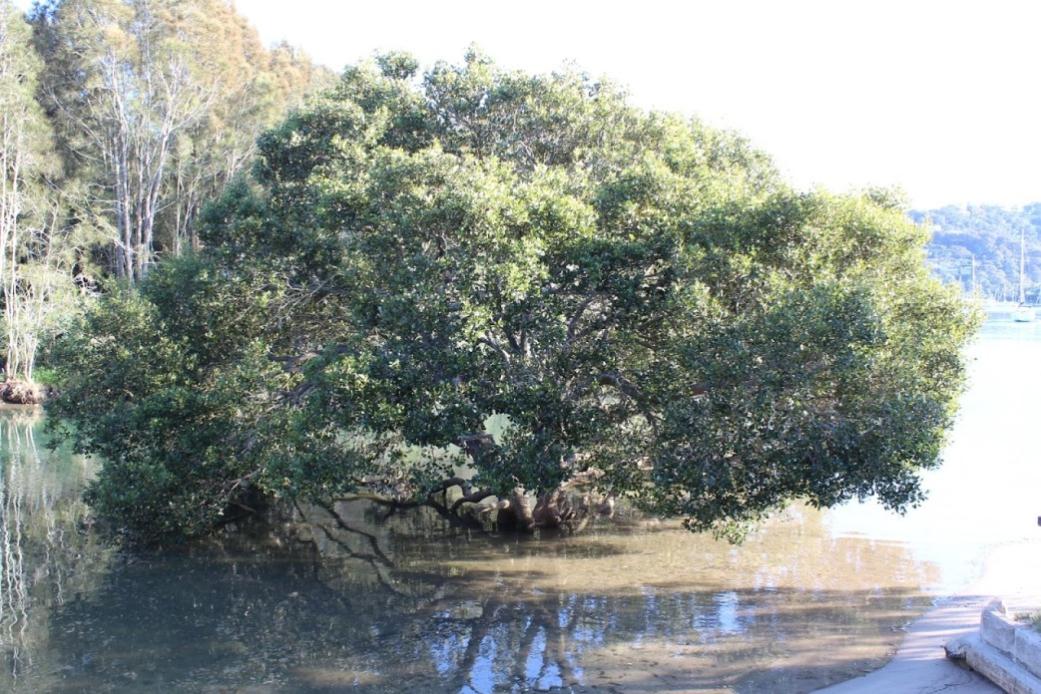
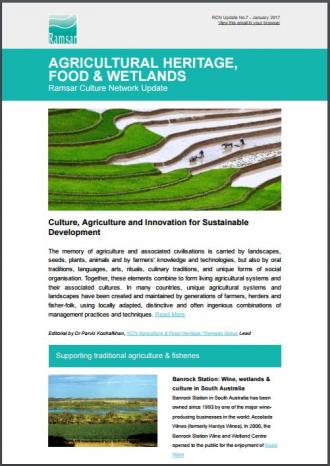 Ramsar Culture Network Update
Ramsar Culture Network Update
27 January, 2017
The Ramsar Culture Network has issued its 7th Update titled CULTURE, AGRICULTURE AND INNOVATION FOR SUSTAINABLE DEVELOPMENT
The memory of agriculture and associated civilisations is carried by landscapes, seeds, plants, animals and by farmers' knowledge and technologies, but also by oral traditions, languages, arts, rituals, culinary traditions, and unique forms of social organisation. Together, these elements combine to form living agricultural systems and their associated cultures. In many countries, unique agricultural systems and landscapes have been created and maintained by generations of farmers, herders and fisher-folk, using locally adapted, distinctive and often ingenious combinations of management practices and techniques.
Traditional agriculture is often considered “backward”, doomed to be phased out in the course of modernisation. Numerous Agricultural Heritage Systems around the world have, however, proven their robustness and resilience, and have stood the test of time. They offer solutions for present and future generations, and for environmental sustainability. They represent a wealth of biological resources, knowledge systems and management practices for producing healthy products that can help to ensure food security and quality of life for humanity and to cope with the challenges of today and tomorrow.
Read the full Ramsar Culture Network update here
Floating Towards Water Treatment
January 25, 2017: American Society of Agronomy
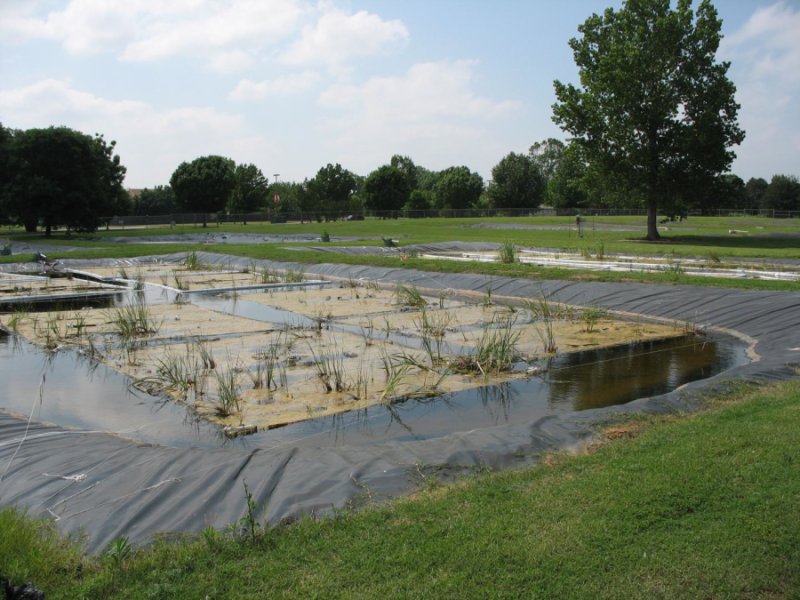
The floating treatment wetland experiment at the University of Oklahoma Aquatic Research Facility. Credit: William Strosnider
Floating wetlands may seem odd but are perfectly natural. They occur when mats of vegetation break free from the shore of a body of water. That got ecological engineers curious about how they affect the water they bob up and down in.
A group from Saint Francis University in Pennsylvania and the University of Oklahoma, including researcher William Strosnider, has found that the floating wetlands show promise for water treatment. They engineered four different floating treatment wetlands designs using different materials and wetland plants.
"The main result is that engineered floating treatment wetlands could affect water quality in many of the same ways that naturally-occurring floating wetlands do," Strosnider says.
For the four designs, the researchers used materials such as drainpipe, burlap, mulch, utility netting, and reused plastic bottles. They planted them with two wetland plants, cattail and common rush. The team then spent three years measuring the effect of the floating wetlands on the water.
Fully treating wastewater requires processing the nitrogen it contains. Strosnider's study shows that these floating wetlands may be able to do this. The study did not directly investigate the processes that allow the wetlands to affect the water. However, they believe it's a combination of different factors.
The plants themselves could be taking up some contaminants in the water, he says, but microbes may have the biggest effect. The base and roots of the floating wetlands make a great place for microbes like bacteria to thrive. There they carry out processes that break down or absorb pollutants such as nitrogen and phosphorus in the water.
There are many examples where these floating treatment wetlands could be successful. They could help treat municipal wastewater by enhancing nitrogen removal. In another example, they could manage algal blooms by helping to regulate water temperature and solar radiation.
Algal blooms are a difficult issue for drinking water reservoirs and coastal ponds. Algae can clog water filters as well as result in lower levels of oxygen in the water, which can kill fish.
To Strosnider, the most interesting thing about the engineered floating treatment wetlands is their ability to do more than improve water quality. They can also provide habitat for fish below the water and insects, water birds, and others above the water.
"The area directly beneath the floating wetlands is high quality habitat, as small fish and amphibians can use the maze of roots to hide from predators," he explains. "In general, the value of habitat that floating wetlands, or any type of treatment wetland, can provide has been poorly studied. We took a small step forward with our study."
Strosnider notes that it could take relatively high-coverage floating treatment wetlands to drive these positive effects. This means that they must continue their research on how best to construct the engineered wetlands and which plants will grow best on them.
Getting the floating treatment wetlands to sustain themselves with minimal maintenance is the main goal of this research, he says. Rather than "intensive" floating wetlands that rely on plastics or styrofoam to function, Strosnider stresses research on "extensive" wetlands that can grow and remain floating all by themselves.
"The next step is to take the lessons learned and test improved extensive designs," he says. "The really big thing that we're working on here is the ability for them to grow and maintain themselves, and hence become a sustainable low-maintenance part of a treatment system. That really was the most interesting and novel part of this work."
W. H. Strosnider, S. E. Schultz, K. A. Johnson Strosnider, R. W. Nairn. Effects on the Underlying Water Column by Extensive Floating Treatment Wetlands. Journal of Environment Quality, 2017; 46 (1): 201 DOI: 10.2134/jeq2016.07.0257
THE PROPOSED NEW SETTLEMENT AT PORT ESSINGTON.
The arrival of Sir J. Gordon Bremer, of H. M. S. Alligator, in this port, on his way to found a new settlement at Port Essington on the north coast of this continent, is an event the most deeply interesting in its probable consequences not only to this colony but to the whole Eastern Archipelago. Our readers are perhaps aware that this is neither the first nor the second attempt of a similar kind that has been made by the British Government in this part of the world ; the settlements of Melville Island and Raffles Bay, the former of which was established in the year 1825 and the latter in 1827, having been successively formed and abandoned. As it may therefore be necessary to show cause why, after two successive failures, a third attempt should be made in the same locality, we have republished in our fourth page a long extract on the subject from the leading article of the 81st number of this journal published on the 14th July, 1836, and consisting chiefly of extracts from Dr. Wilson's Voyage Round the World, in which a very interesting account is given of the formation and abandonment of these settlements, as well as of the reasonable prospects of any British settlement established judiciously on the north coast of the Australian continent. Taking it for granted therefore that our readers will peruse these interesting extracts, and will recognise the propriety and importance of the expedition in which Sir Gordon Bremer is at present engaged, it may not be out of place to state the circumstances in which the idea of forming a settlement at Port Essington appears to have suggested itself at the present moment to her Majesty's government. In the month of March, 1837, Messrs. Allan Kerr and Co., of Greenock, the owners of the brig Stirling Castle, which was wrecked on this coast to the northward in the course of the preceding year, and of which as is well known to our readers, the captain and several of the crew were murdered by the black natives to the north-ward of Moreton Bay, addressed a memorial to Lord Glenelg, soliciting that his Lordship would take such measures as might appear expedient and necessary for the protection of British commerce, and especially of shipwrecked British seamen, in these seas.
Being little acquainted, however with the capabilities of this continent, and not knowing what might be practicable for the Government in such a case, Messrs. Kerr showed the draft of their memorial to Dr. Lang, who happened to be passing through his native town of Greenock, on his way to Ireland, at the time when the document was preparing, and requested him to point out what it would be proper to suggest to his Lordship in a memorial of the kind, Dr. L. accordingly revised the proposed memorial, and recommended that it should be suggested to his Lordship to establish one or more settlements on the north or north-east coast of this continent, and to afford encouragement to Missions to the Aborigines in that direction; Dr. L.'s own memorial, praying for assistance for the establishment of the German Mission to the Aborigines at Moreton Bay, being at that very time under consideration at Downing-street. These suggestions were accordingly embodied in the memorial and the Chamber of Commerce of the town of Greenock, of which the Messrs. Kerr were members, being also interested in the matter from the loss of a fine vessel, and the murder of a highly respectable Captain belonging to their port, a similar memorial, embodying the same suggestions, was forwarded by that body through Robert Wallace, Esq., M.P. for Greenock,to the Board of Trade or the Lords of the Treasury. Dr. Lang's work on Transportation and Colonisation— in which it was strongly recommended to the Government, as " a third mode of employing convicts, at Government labour on the Australian continent," in the event of the discontinuance of transportation to this colony, to form a settlement at Port Essington on the north coast— being also published at the same time or in the beginning of April 1837, there can be no doubt that all these circumstances combined led to the proposed formation of the new settlement at Port Essington, of which we have ascertained from unquestionable authority that the design was formed immediately thereafter. Of Dr. L. 's work, which was read by Sir George Grey immediately after its publication, the following passage referred to: —
" Following up the judicial suggestions of Earl Bathurst, and the recommendation of Mr. Commissioner Bigge, in as far at least as the principle involved in these suggestions and recommendations is concerned, I would earnestly recommend the formation of a distinct penal colony on the north coast of New Holland, as well for the immediate employment of such convicts as it might be expedient to remove from the districts, whether already settled or to be settled, within the present colonial territory ; as for the eventual establishment of a free settlement of a somewhat different character from those recommended for the district of Moreton Bay. The particular object of such a settlement, and its vast importance to Great Britain in a variety of lights, will appear in the sequel, and will doubtless suggest themselves to every intelligent reader whenever its proposed situation is indicated. That situation is Port Essington, a harbour second only to Port Jackson, and beyond all comparison the best yet discovered on the north coast of the Australian continent. It is situated at the northern extremity of the Coburg peninsula, to the westward of the Gulf of Carpentaria, and forms unquestionably one of the most commanding positions for a British settlement, whether in a commercial, in a political, or in a moral and religious light, on the face of the globe.
Such a settlement, for example, would eventually command the commerce of the great eastern Archipelago, with its rich and varied productions, and its millions of inhabitants. It lies in the track of the Malay fleet that annually visits the northern coasts of New Holland, for trepang or beche la mer, as well as in the direct route of all vessels bound from the east coast of that continent, through Torres' Straits, to India or China. And, be-sides the likelihood of its speedily becoming a favourite and extensive emporium of trade for the Eastern world, a settlement in that locality would doubtless very soon attract numerous Hindoos, Chinese, and Cingalese, who would introduce the various arts and industry of their respective countries. "
In the formation of such a settlement, several thousand convicts could be employed advantageously for a series of years –in the erection of public buildings, whether of immediate necessity or of permanent utility; in the clearing of land for gardens and for agricultural purposes suited to the soil and climate ; in the formation of roads, tanks, piers, bridges, &c. The supplying of a settlement of this kind with the necessaries of life, by means of convict labour employed in the cultivation of land within the settlement itself, should not, I conceive, be attempted. These, with the exception of vegetables and the more common species of tropical fruits, which could be easily raised on the spot, would be procurable in the first instance at a much cheaper rate from New South Wales. Free emigrant British subjects, who might eventually settle in such a colony, would do so as merchants and capitalists, and not as cultivators of the soil on their own account, or by their own labour. A class of cultivators, with the advantage of a previous knowledge of all the processes of inter-tropical agriculture and a perfect adaptation to the climate, could be easily procured in the vicinity of Port Essington, (as testified by Capt. Lawes, of His Majesty's ship Satellite) of natives of the East ; ticket-of-leave men and convicts, who had served out their term of sentence in the settlement, being allowed to settle in a similar capacity.
" As a penal colony, a settlement in the proposed locality could scarcely be unsuccessful in the attainment of its object, provided the grand errors and great mismanagement, that have hitherto proved causes of failure in New South Wales and Van Diemen's Land, were carefully guarded against, and the dear-bought experience of the past converted into a useful lesson for the future. But even if it should prove unsuccessful in that object, as is scarcely to be anticipated, the loss would be comparatively small ; as a settlement at Port Essington would, doubt-less, prove the foundation of another noble superstructure of British power, British commerce, and British influence in the East. Should it prove successful as a penal settlement, a series of settlements could be formed successively on the same model all along the northern coast of New Holland, from Cape Yorke to Cape Maria Van Dieman, as well as within the Gulf of Carpentaria ; the penal character of such settlements to be temporary only, and to prepare the way for future colonies of freemen.
"It may, doubtless, be urged, in reference to these suggestions, that two attempts have already been made within the last twelve years to colonise the north coast of New Holland; viz. at Melville Island and Raffles Bay ; both of which, however, proved unsuccessful. But the former of these settlements was not more in-judiciously formed than the latter was injudiciously abandoned. Melville Island— a low, swampy, and unhealthy situation, covered with thick jungle, surrounded by hostile natives, and withal quite out of the usual track of Malay vessels— proved to be quite unfit for the purposes contemplated ; and the settlement was accordingly transferred eventually to Raffles Bay, on the Eastern side of the Coburg Peninsula, and within a few miles of the splendid harbour of Port Essington.
In that locality the usual difficulties of a first settlement had already been happily surmounted; the salubrity of the climate and the adaptation of the soil for all tropical productions had been incontestably established; the surrounding tribes of natives, who were at first hostile, in consequence of acts of unwarrantable aggression, had been conciliated ; a friendly intercourse had been opened with the Malay vessels that frequent the coast; and the prospects of the settlement generally were in the highest degree favourable; when orders from home, dictated in consequence of accounts transmitted in the first moments of despondency, were received by way of New South Wales, for its immediate abandonment. It was consequently abandoned forthwith, with great loss to the British Government, and with extreme reluctance on the part of those more immediately concerned in its welfare and advancement.
" In addition to the other motives that should induce His Majesty's Government to re-establish the settlement which was thus so unhappily given up, on the north coast of New Holland, I may observe, that Port Essington and Raffles Bay are in the immediate vicinity of Torres' Straits; a narrow passage, of which the navigation is unusually perilous, and which has hitherto proved a frequent source of shipwreck or disaster to British vessels. Besides, as hardships of various kinds, difficulties of unexpected magnitude, and disease in unlooked- for aspects, are almost uniformly experienced in the formation of new settlements, even in situations that are afterwards found remarkably salubrious, as was eminently the case even in New South Wales; it is surely fitting and reasonable, that these hardships, difficulties, and diseases should be encountered and surmounted by transported felons, rather than by a free emigrant population. In short, under a proper system of management, and at a comparatively small expense to Government, a line of penal settlements, and settlements of a mixed character, like the one proposed at Moreton Bay, might be formed successively along the east and north coast of New Holland, from Port Macquarie to Dampier's Archipelago, to be successively converted into absolutely free colonies, in the order of their formation; ticket-of-leave men, and convicts who had earned conditional pardons by their good behaviour, to be left in the capacity of servants or labourers for hire, to the free emigrant population, on the abandonment of each establishment as a penal settlement." The settlement at Port Essington is at first not to consist of more than three hundred persons, Lord Mel-bourne, we understand, being greatly afraid of the expense. So small an establishment, doubtless, cannot be expected to do much or to make a strong impression in favour of the new colony ; but, small as it is, we doubt not that it will soon form a centre or attraction for Malays, Chinese, Hindoos, and Cingalese, and we trust that its great and acknowledged importance will ere long induce Her Majesty to place it on a more respect-able and liberal footing.
There is one thing extremely fortunate for the new settlement, as the probable nucleus of a future and extensive British empire in the Eastern Seas; and that is the appointment of Sir J. Gordon Bremer as its Governor and founder. For an officer of such rank as that gallant officer has attained in the British Navy, to leave his family and the command of a ship of the line on the coast of England, to undertake the government of an embryo colony, in the midst of naked savages on the north coast of New Holland, evinces a degree of enthusiasm in the arduous and important undertaking in which he is embarked, which is itself one of the likeliest means of ensuring its success, — a degree of devotedness to the cause of national advancement, and we will add, of enlightened and Christian philanthropy which has seldom been surpassed. In the journal of an expedition, undertaken at the instance of the Dutch Government by two officers of the Dutch Navy, among the islands to the northward of this continent, and recently published, it is stated that these officers un-expectedly discovered a body of native Christians of the Dutch or Presbyterian communion in some of these islands, which it seems had been visited by Dutch Missionaries from Batavia upwards of seventy years ago, but had subsequently been entirely lost sight of. Such a circumstance is of the happiest omen, and affords the pleasing hope that the new settlement at Port Essington, situated as it is in the immediate vicinity of a vast archipelago of islands teeming with inhabitants, will ere long be one of the most important centres of civilization and Christianization in the known world. It will also be an excellent half-way house for future steam-boats from Sydney to Calcutta. THE PROPOSED NEW SETTLEMENT AT PORT ESSINGTON. (1838, August 23). Launceston Advertiser (Tas. : 1829 - 1846), p. 3. Retrieved from http://nla.gov.au/nla.news-article84750863
